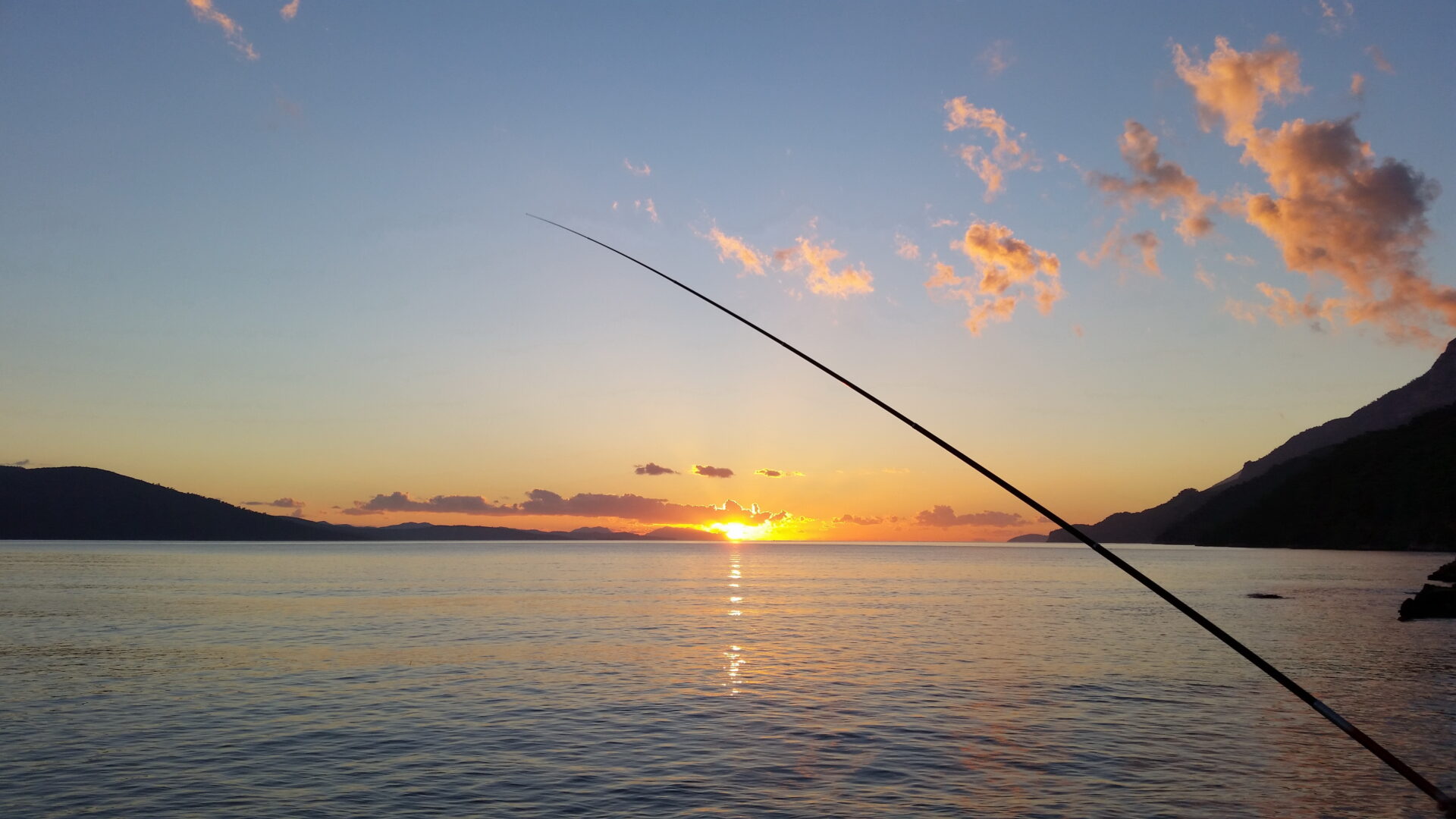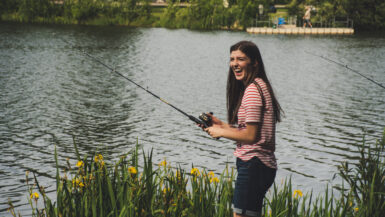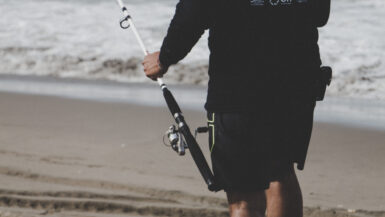Fishing is an activity enjoyed by many, and having the right equipment is key to ensuring a successful day. Buying the right freshwater fishing rod can be intimidating with the vast selection of sizes, weights, and prices. To make sure you pick the perfect rod for your style and needs, here is a fishing rod buying guide designed to help you find the ideal rod for your next freshwater fishing adventure.
Understanding Your Fishing Needs
When you’re shopping for a new fishing rod, it’s important to make sure that you choose the one that best fits your needs. Before you start shopping, it’s important to assess your fishing requirements so you can pick out a rod that is the best fit for you.
The Basics
First, decide what type of freshwater fishing you’re planning to do. There are different types of rods for different types of fishing, such as fly fishing, spinning, trolling or baitcasting. Once you’ve determined the type of fishing you’re going to do, then it’s time to think about specific features you’ll need in a rod.
Rod Length and Action
The length and action of a fishing rod play an important role in finding the rod that’s right for you. A longer rod will be better suited for open waters and deeper depths, while a shorter rod will give you more control when fishing in tighter quarters. The action of the rod refers to how much the rod will flex when a fish is caught. A fast action rod will bend at the tip and be more suited for lighter lures, while a medium or slow action rod will be better for heavier lures and larger fish.
Power and Material
The power rating of a fishing rod is related to the weight of the lure and the size of the fish you are likely to catch. A light power rod will be more suited for smaller lures in shallow waters, while a heavy power rod is better for larger lures and deeper depths. Fishing rods are constructed with a variety of materials, such as graphite, carbon fiber or fiberglass. Each type of material has its own advantages and disadvantages, so you want to make sure you choose the right material for your needs.
Other Factors to Consider
When shopping for a new fishing rod, it’s also important to consider the cost, the weight and the balance of the rod. You want to find a rod that fits your budget but is still of high quality. The weight of the rod is important to think about, as a too-heavy rod can cause fatigue when fishing, while a too-light rod won’t have enough power. The balance of the rod should feel comfortable in your hands, as you don’t want to be fighting the rod as you try to land a big catch.
By assessing your fishing needs, you can easily find the right rod for you. With so many options available, it can be overwhelming, but with a little research, you can find the perfect rod for your freshwater fishing needs.
Types of Freshwater Fishing Rods
Fishing reels are an important choice when it comes to fishing for freshwater species. Reels come in a variety of types, each of which has its own advantages and disadvantages. Spinning reels are well-suited for beginners and work great for light lines and lures that do not require the power of larger reels. Baitcasting reels provide greater control and accuracy when casting, allowing the angler to cast further and with more accuracy. Fly reels provide smooth drag, making them ideal for fighting larger fish. Finally, spincast reels are a great choice for children and beginners and are easy to use.
Material and Price Range of Freshwater Fishing Rods
When it comes to choosing a freshwater fishing rod, you’ll want to consider the material and budget. Graphite is a lightweight but strong material, while fiberglass is a heavier, more durable option. Bamboo is known for its classic and traditional look, and composite materials are a great combination of both graphite and fiberglass. Price range for fishing rods can vary widely, from less than $20 for a basic model to several hundred dollars for a more advanced and durable rod.
Length and Action for Selecting a Freshwater Fishing Rod
The length and action of a fishing rod are important considerations when choosing which one is best for freshwater fishing. Longer rods from 7-10 feet are great for fishing further out from the shore, while shorter rods from 4-6 feet are good for fishing close in. As for the action, rods with a fast action are great for accuracy and casting distance, while those with a slow action provide more forgiveness and better control.
Finding the Right Freshwater Fishing Rod
Finding the right freshwater fishing rod can be overwhelming, but it doesn’t have to be. By considering the types of reels, materials, price range, length, and action, it is possible to narrow down your choices to find the perfect rod for your needs. With a bit of research, patience, and some help from an experienced angler, you’ll be sure to find the perfect rod for your freshwater fishing adventures.
Rod Action and Power
When it comes to freshwater fishing, there are many types of rods available for anglers to choose from. From ultra-light spinning rods for small panfish to ultra-heavy surf rods for larger game fish, it’s important to know the various types of rods and their uses so you can choose the right one for your fishing needs.
Rod Length and Size
The length of the rod you choose will depend largely on the type of fishing you want to do. Ultra-light spinning rods are usually on the shorter side and are perfect for small streams and creeks where space is limited. For larger lakes and ponds, a medium-light spinning rod is a great choice because it provides more flexibility for casting and retrieving.
Rod Power and Action
The power of the rod refers to its weight, or how much weight it can handle. A medium-light or medium rod is typically used for freshwater fishing because it is light enough to handle smaller fish while still having the power to handle larger ones. The action of the rod refers to its flexibility—a medium-fast action rod is best for most freshwater applications as it gives anglers the most versatility when casting and retrieving.
Rod Construction
The construction of the rods also plays an important role in how it will hold up to various conditions. Graphite is a popular material for freshwater rods because it is durable yet lightweight. Fiberglass is also a good choice for freshwater rods because it is flexible and can withstand wear and tear better than graphite. Lastly, composite rods are also commonly used for freshwater fishing because they offer the strength of graphite with the flex of fiberglass.
Rod Reel Seats and Guides
Rod reel seats are designed to secure your reel to the rod, and many feature cushioned bodies for extra comfort. Guides also play an important role in the performance of your rod, and they’re usually made from aluminum oxide or stainless steel. The number of guides and their placement on the rod are important factors to consider, as they affect the casting distance and overall performance of the rod.
Rod Accessories and Features
Many rods come with additional features or accessories to help make your fishing trips more enjoyable. Rod handles are often made with EVA foam or rubber to provide a comfortable grip, and some rods even have expandable handles to make them easier to store and transport. Other features, such as rod stands, can also come in handy, especially if you’re planning to use the rod for long periods of time.
Choosing the right rod for freshwater fishing can be a daunting task, but understanding the different types of rods and their uses can help make the process much easier. From rod length and size to power and action, there are many factors to consider when choosing the right rod for your fishing needs. Making sure you have the right rod reel seats, guides, and accessories can also help you get the most out of your fishing rod.
Rod Length and Handle Type
Choosing the right fishing rod length and handle type is essential when it comes to fishing success. Fishing rod length is an important factor that determines the performance and versatility of the rod. The size of the rod will determine the range of lures you can use and how well you can cast them. The handle type will also play a role in how comfortable it is to use the rod.
Do I Need a Longer or Shorter Fishing Rod?
The answer to this question depends on the type of fishing you plan on doing. If you plan on using light lures and baits, a shorter fishing rod may be the best choice. Shorter rods are typically more accurate when using light lures, as they are less likely to be affected by wind or other factors. On the other hand, if you plan on using heavier lures or baits, you may need to opt for a longer rod to help increase casting distance and control.
Types of Fishing Rod Handles
When it comes to handles, there are a few different types to choose from. The most popular handles are cork and foam. Cork handles are lightweight, ergonomic, and can provide a comfortable grip when wet. Foam handles are more durable and provide more insulation against cold water and weather.
No matter what type of handle you choose, make sure it is comfortable and provides you with a good grip. A handle that is too long or too short can make it difficult to control your rod.
Conclusion
Choosing the right fishing rod length and handle type is important for fishing success. Knowing the type of fishing you plan on doing should help you determine the ideal length and handle type for your needs. If you are unsure, consider consulting with an experienced angler for advice. With the right rod length and handle type, you can improve casting distance, accuracy, and comfort while fishing.
Reel Seat and Rod Guides
When purchasing a fishing rod, one of the key components to consider is the reel seat. Reel seats are the mechanism that attaches the reel to the rod, so it’s important to choose the right one. Generally, spinning and baitcasting reels use a sliding ring reel seat, while fly reels are usually mounted in a fixed-ring reel seat. Sliding ring reel seats are typically found on rods designed for spinning and baitcasting, allowing for the reel to slide up and down the length of the rod for better balance and casting distance. Fixed-ring reel seats, on the other hand, are more commonly used on fly rods, providing better sensitivity and better control when casting a fine line.
Rod Guides
The guides on a fishing rod also play an important role in determining the rod’s performance. The guides are the eyes on the rod that keep the line in place while it is being cast. Generally, spinning and baitcasting rods have a combination of different sizes of guides with the smallest near the reel and the largest near the tip of the rod. Fly rods, on the other hand, typically have one large guide at the tip of the rod and several smaller ones near the reel.
It’s important to choose the right type and size of guides for the type of fishing that you plan to do. For example, if you are using a light line, then you should use smaller guides. This will help reduce the amount of friction on the line, making for a longer and smoother cast.
Types of Materials for Rod Guides
Along with choosing the right size and type of guides, it is also important to consider the material that the guides are made from. Generally, fishing rods are fitted with either ceramic or metal guides.
Ceramic guides are great for light- to medium-action rods, as they tend to be lighter and provide a smoother line flow. Metal guides, on the other hand, are great for heavier rods, as they are more durable and can handle the extra load on the line.
No matter what type and size of guides you choose, make sure to always inspect them before purchasing a rod to ensure they are in good condition and won’t affect your casting performance.
Care and Maintenance
Taking care of your fishing rod is essential for the longevity and wellbeing of your equipment. For freshwater fishing, washing your rod with a clean, dry cloth should be enough. If the rod has been exposed to a particularly salty environment, then it should be rinsed off with fresh water. This will help prevent corrosion and other build up on the rod and prevent it from being damaged over time.
Drying Your Fishing Rod
Once you have washed your rod, it is important to ensure that you dry it off properly before storing it away. Allowing the rod to air-dry should be enough. You should never put the rod away while it is still damp, as this could cause long-term corrosion damage that is irreversible. Make sure you also inspect the rod for any visible signs of corrosion before you put it away.
Storing Your Fishing Rod
When it comes to storing your fishing rod, the key is to try and make sure that it is not being exposed to any elements that could cause damage. If you can, it is best to store the rod away from direct sunlight and extreme temperatures. Also, it is important to always make sure the reel is unspooled and that the line is not tangled, as this can cause the rod to break more easily.
Maintenance of Your Fishing Rod
It is important to inspect your fishing rod regularly for any signs of wear and tear. If there are any worn parts, it is best to replace them as soon as possible to ensure that the rod remains in good working condition. Additionally, it is important to regularly check the reel and line for any snags or breaks. This will help you avoid any unnecessary repair costs. Lastly, make sure you lubricate the reel periodically to keep it in optimum condition.
Essential tips for freshwater fishing
Choosing the right fishing rod for freshwater fishing can be a daunting task. Before setting out to buy a rod, it’s important to understand the type of fish you are targeting, the weight and length of the rod, and the material used. Rods come in different sizes, from ultra-light to medium and heavy-duty. The action of the rod is also important. Knowing your fishing style will help you determine the type of rod you need. Spinning, bait-casting, or fly rods will each have a different action, so knowing which one works best for you is essential. Lastly, rod guides should be snug and lined up correctly for optimal performance. By considering all these factors, you can easily choose the right rod for freshwater fishing.
Once the right rod is chosen, freshwater fishing can be a rewarding activity that anyone can enjoy. Following the tips above can ensure that you choose the best rod and have a successful and enjoyable experience.





Leave a reply